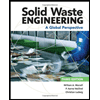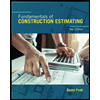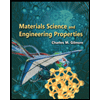
Find the average reaction force for the corresponding time of contact on cushion material.
Answer to Problem 39P
The average reaction force for the corresponding time of contact is calculated and tabulated in Table 1.
Explanation of Solution
Given data:
Weight of the laptop
Laptop is dropped at a height
Formula used:
Formula to determine the average force is,
Here,
m is the mass of the object.
Formula to determine the initial velocity of the laptop right before the floor is,
Here,
g is the acceleration due to gravity.
h is the height at which laptop is dropped.
Formula to determine the mass of the laptop is,
Here,
w is the weight.
g is the acceleration due to gravity.
Calculation:
The cushion material reduces the velocity of the laptop to a final velocity of zero. Therefore,
Substitute
Substitute 22 N for w and
Substitute 0 for
Substitute 0 for
Reduce the equation as follows,
Substitute 0 for
Substitute 0 for
Substitute 0 for
Thus, the average reaction force for the corresponding time of contact is calculated and tabulated in table 1.
Table 1
| Time of contact (Seconds) | The average reaction force (N) |
| 0.01 | 992N |
| 0.05 | 198N |
| 0.1 | 99.2 N |
| 1.0 | 9.92 N |
| 2.0 | 4.96 N |
Conclusion:
Hence, the average reaction force for the corresponding time of contact is calculated and tabulated.
Want to see more full solutions like this?
Chapter 10 Solutions
Engineering Fundamentals: An Introduction to Engineering
- For the truss shown in Fig 2, determine the nodal displacement and member forces for all elements of the truss. Assume for each member A = 0.0015 m2 and E = 200 GPa please show all working, relevant FBD's and use ID's indicated in the diagram. Note: the truss has a vertical measurement of 2m and a horizontal mesurement of 2marrow_forwardα t Αν 'A B 'B Column 1 Column 2 t t α Section A-A (for column 1) steel steel concrete concrete 2t 2t 2t 2t a Section B-B (for column 2)arrow_forward(40 pts Q: By using the PERT technique to calculate the duration of activities, as shown in the table below, Draw an activity network for the following project by using AOA method and find: 1. The project's total duration and date of completion and CP (assume the project start date 1st of May 2024). 2. The overall variance of the project? 3. The probability of completing the project in 50 days? 4. The probability of completing the project in 5th of June 2024? 5. With a probability of 90%, what is the expected duration and date for completing the project? Activity Preceding activity Optimistic duration (day) A Most likely duration (day) Pessimistic duration (day) 6 12 18 B 5 7 C 15 8 10 D 12 A 7 10 19 E C 12 15 F 18 A 7 8 G 15 A 5 9 25 H B.D.E 15 17 25 I C 14 19 30 J F 6 8 10arrow_forward
- 1. For the system shown below, calculate the power supplied to the pump if its efficiency is 82%. Methyl alcohol at 25°C is flowing at the rate of 50m³/hour. The suction line is a standard DN100 schedule 40 steel pipe, 15m long. The total length of DN50 schedule 40 steel pipe in the discharge line is 180m. Assume that the entrance from reservoir 1 is through a square-edged inlet and that the elbows are standard. The valve is a fully open globe valve. 12m Discharge line DN 50 schedule 40 steel Pump Suction line Fully open globe valve DN 100 schedule 40 steel Flow Standard elbows (2)arrow_forwardDetermine rotations at all the nodes of the beam and reactions at the supports using stiffness method. Assume support 1 and 3 are roller and support 2 is pinned, L1=1.25m, L2=3.75m and w=60kN/m. Please show all working and FBD's where relevant.arrow_forwardDraw the BMD of the beam on the compression side showing the salient values. What are the maximum bending moments of the beam? Draw the deflected shape of the beam. Assume support 1 and 3 are roller and support 2 is pinned, L1=1.25m, L2=3.75m and w=60kN/m.arrow_forward
- Size a flash and floc tank: Provide a sketch with dimensions and calculations Provide for vertical mixers Size the mixer and motor Flow Rate 33 MGD Peaking Factor 1.5 Use VDH Regs (Online) Low Temp 40 degrees High Temp = 70 degrees Redundant Tanksarrow_forwardI do not know how to solve this questionarrow_forwardI don't know how to solve this questionarrow_forward
- A national pricing service says the National price is $12.35 per unit. The adjusted price adjustment for Los Angeles is 1.15. The price adjustment for Tulsa is 0.94. What is the expected price difference between Tulsa and Los Angeles? c.$2.98 b.$2.59 d.$0.00 a.$0.21arrow_forwardPROBLEM: Design the transversely reinforced concrete deck slab shown in the cross-sectional detail below. 8" REINFORCED CONCRETE SLAB 1/4" PER FT. T 3-3% 8'-0" 8'-0" 4'-0" GIVEN: Bridge to carry two traffic lanes. Concrete strength =4.5 ksi. Grade 60 reinforcement f, = 60 ksi. Account for 25 psf future wearing surface. Assume stringers are W36 x 150. Deck has a 0.5 in integrated wearing surface.arrow_forwardPlease help me answer this questionarrow_forward
 Engineering Fundamentals: An Introduction to Engi...Civil EngineeringISBN:9781305084766Author:Saeed MoaveniPublisher:Cengage Learning
Engineering Fundamentals: An Introduction to Engi...Civil EngineeringISBN:9781305084766Author:Saeed MoaveniPublisher:Cengage Learning Solid Waste EngineeringCivil EngineeringISBN:9781305635203Author:Worrell, William A.Publisher:Cengage Learning,
Solid Waste EngineeringCivil EngineeringISBN:9781305635203Author:Worrell, William A.Publisher:Cengage Learning, Fundamentals Of Construction EstimatingCivil EngineeringISBN:9781337399395Author:Pratt, David J.Publisher:Cengage,
Fundamentals Of Construction EstimatingCivil EngineeringISBN:9781337399395Author:Pratt, David J.Publisher:Cengage, Principles of Foundation Engineering (MindTap Cou...Civil EngineeringISBN:9781305081550Author:Braja M. DasPublisher:Cengage Learning
Principles of Foundation Engineering (MindTap Cou...Civil EngineeringISBN:9781305081550Author:Braja M. DasPublisher:Cengage Learning Traffic and Highway EngineeringCivil EngineeringISBN:9781305156241Author:Garber, Nicholas J.Publisher:Cengage Learning
Traffic and Highway EngineeringCivil EngineeringISBN:9781305156241Author:Garber, Nicholas J.Publisher:Cengage Learning Materials Science And Engineering PropertiesCivil EngineeringISBN:9781111988609Author:Charles GilmorePublisher:Cengage Learning
Materials Science And Engineering PropertiesCivil EngineeringISBN:9781111988609Author:Charles GilmorePublisher:Cengage Learning





